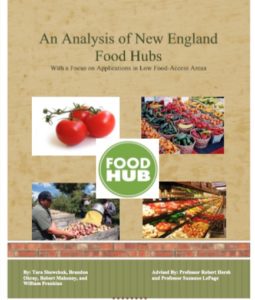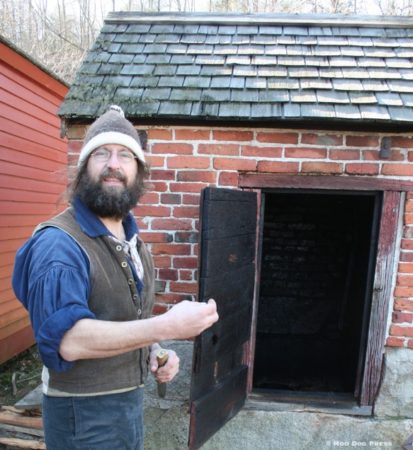Simply Good (Food) Business Market Corridor: Ingenuity Opportunities
Growers, business owners, farms, producers and artisans – this is your era to capitalize on the growing clamor for quality, made-in-the-USA, grown-local, and choose-where-your-goods-come-from decisions. Step up, think big, but keep your eye on needs and wants to find a niche, cultivate a business (even a micro-business). Humanity faces a frontier of change across a spectrum of technologies, but some things never go out of style – like good food and providing solutions.
The “Northeast megalopolis” is the coastal area from Boston to Connecticut and New York, south to Washington, D.C., a region that is home to some 52 million humans, their pets and livestock – which includes equines. The northeast urban core makes up just two percent of the total U.S. land area, yet the population represents 18 percent of the total U.S. population. Those numbers will swell to 58 million consumers of food and goods by 2025, according a University of Pennsylvania City and Regional Planning report.
Access to good food and great products is something many take for granted.
So exactly how easily accessible are foods and products created or grown within 100-mile radius?
It's obvious that people need to eat and that food has to get to where it can be purchased.
The U.S. Department of Agriculture defines a “food hub as a centrally located facility with a business management structure facilitating the aggregation, storage, processing, distribution, and/or marketing of locally/regionally produced food products.” A mouth full, yes. Remember, much of this is perishable and bruises – and then becomes unsellable. What to do? Solve each challenge, find a way.

An Analysis of New England Food Hubs by the Worcester Polytechnic Institute. Image is linked to the online PDF complete report.
One such business found is Trifecta Ecosystems (link to the company Facebook page) – a “sustainable agriculture brand that uses aquaponics systems to provide fresh food, education, soft-skill training, and community integration programming to cities across Connecticut.” Awards include Entrepreneur Innovation Award CT Next 2015. CT Innovation Summit Most Promising Energy, Environmental & Green Technology Company Top Tech Company to Watch by the Connecticut Technology Council. USDA Specialty Crop Block Grant. CCAT Small Business Incubator Program Grant. DECD Business Express Grant. Now with a brand-new indoor farm located in Meriden with “multiple systems for personal, educational, and city-wide use, and a FreshCSA program that is providing fresh greens and salad to local and surrounding communities, we’re working to change our world’s food economy, one sustainably fed city at a time.” (Stay tuned for an on-site visit to see how all this looks and works.)
More about the re-use of a former factory hub building in Meriden and an enterprise zone linked here.

Arrow points to a building that has seen many changes on Pratt Street in Meriden, Conn. Portion of a map.
Take for example, that the USDA's online interactive training to help other funders understand the work of regional food enterprises that are connecting local producers with local markets, and why they might want to invest in a piece of this pie. Since 2009, the USDA has invested more $1 billion in local and regional food businesses and infrastructure projects, for local and regional food systems as one of the four pillars of agricultural and rural economic development.
As consumer demand is driving enormous growth in local food businesses, these investment opportunities are often significantly different from those with which many financial institutions are used to working. Regional food enterprises are often lean businesses, low in collateral and high in risk as they trade in perishable foods. Seasonality can lead to significant spikes and valleys in cash flow. Yet, for the financial institutions that take the time to get to know the industry, local food businesses can be an excellent investment, particularly for investors looking for the additional social and environmental returns.
All of which is why USDA has joined forces with Wholesome Wave, a national non-profit working to increase affordable access to local produce, to offer free online interactive training to help funders of all stripes better understand what these food businesses have to offer the bottom line.

Slow and savory – a traditional smokehouse can be seen at Old Sturbridge Village – but the delectable flavors can be sampled in popular (and growing) independent businesses. AGH/MDP
The online training, What's the Big Deal? Assessing and Financing Regional Food Enterprises, helps funders and investors better understand and assess regional food businesses by providing an introduction to the food sector and regional food enterprises, a framework for conducting due diligence and a case study exercise to practice assessment. The training also introduces “capital stacking,” by which multiple funders, from private philanthropy, mission-oriented lenders, traditional lenders and public or government programs, use different models and levels of risk-tolerance to meet the capital needs of regional food businesses need.
The Opportunity Finance Network is a leading national network of community development financial institutions (CDFIs) working in underserved communities, getting funds and loans to people who sometimes can’t access traditional lending sources.
Beyond CDFIs, the leadership at USDA wants even more funders take a seat at the local foods table including credit unions, equity investors, foundations, impact investors and angel investors. Capital-stack deals have already made the difference for many regional food enterprises including Farm Fresh Rhode Island, a regional food aggregator and distributor.
A great example is Farm Fresh R.I. that needed a loan for additional cooler space but didn’t have enough collateral to fully secure a traditional loan from Coastal Enterprises Incorporated (CEI), a CDFI based in Maine. Using a no-interest loan from the Jesse and Betsy Fink Foundation, Wholesome Wave provided a guarantee for a portion of the loan from CEI. This arrangement allowed the business to get its loan for the equipment, CEI to make a loan that met its underwriting standards, and for Wholesome Wave and the Foundation to achieve their mission of supporting the development of regional food system infrastructure. None of those goals would have been met without bringing multiple parties to the table with their different tools and risk and return profiles.
“CEI was incorporated in 1977 – a start-up with a big need for investment capital to meet big goals.”
Maine-based CEI is a nonprofit organization that was founded in 1977 by Ron Phillips, a civil rights activist and recent seminary graduate, to help “create income, employment, and ownership opportunities, especially for people left out of the economic mainstream. CEI has provided $1.27 billion in loans and investments for 2,649 businesses, helped to create or preserve 35,707 jobs, advised and counseled 53,143 people and businesses, and created or preserved 2,001 affordable housing units, and 5,806 child care slots. Both a Community Development Corporation (CDC) and Community Development Financial Institution (CDFI), CEI has grown to include several subsidiaries including CEI Ventures and CEI Capital Management. In 2016, Betsy Biemann, CEO, and Keith Bisson, President took over the leadership of CEI upon Ron Phillips’ retirement. Together with CEI’s 80 staff members, they are working to ensure an even greater level of impact over the next 40 years.” Full CEI report linked here.
Since an inordinate amount of business does happen every day off the clickable-trackable digital world – when these efforts are meshed with digital delivery and technology – well, that can provide a powerful component to what you love to make, grow, create and then want to sell – whether as a solo entrepreneur with a micro-enterprise or as CEO of a thriving brick-and-mortar enterprise. Press on.

